Main results
The project progress and main results of IMOTHEP's six technology streams are showcased here below:

Integrated Vehicle Design

Objectives
The central focus of IMOTHEP is on the exploration of technologies for hybrid-electric propulsion (HEP) chains, which need to be studied in close relation with aircraft mission and configuration to derive relevant specifications for the investigation of electric components, such as the power requirements and the operational constraints. In addition, previous studies have shown that the integration of HEP could lead to drastic changes in aircraft architecture to maximize benefits of this revolutionary type of propulsion, for example through the use of distributed electric propulsion (DEP) or boundary layer ingestion (BLI).
In this context, the role of integrated vehicle design in IMOTHEP is to manage the consistency of technology integration at aircraft level by realising three sequential design loops. After defining the Top Level Aircraft Requirements (TLARs), the design space for Regional (REG) and Short-Medium Range (SMR) hybrid electric configurations will be explored at conceptual, detailed and refined levels. This will provide the requirements for the aeropropulsive integration and the definition of the hybrid-electric power chain, while, in a subsequent step, it will allow to incorporate the results of technological studies in the overall aircraft design process.
Progress
A final design loop is undergoing within IMOTHEP on the two radical configurations that were selected for a refined analysis. This final design loop is currently integrating the outcomes of the second design iteration that was performed on the components of the hybrid propulsion chain. The potential benefit of superconductivity is also being assessed for the radial SMR.
Results should be available soon!
During the last period, the work in the area of Integrated Vehicle Design has focused on the completion of Design Loop 1, which involved two types of activities: the progressive collection of updated models and performance figures from the technology work packages (Energy Generation and Electric Propulsion Chain Components), and the refinement of the multidisciplinary design process, taking into account advanced insights in the areas of Electric Architecture and Aero-Propulsive Integration. This made it possible to draw first conclusions on both REGIONAL and SMR segments with regard to IMOTHEP’s high-level targets.
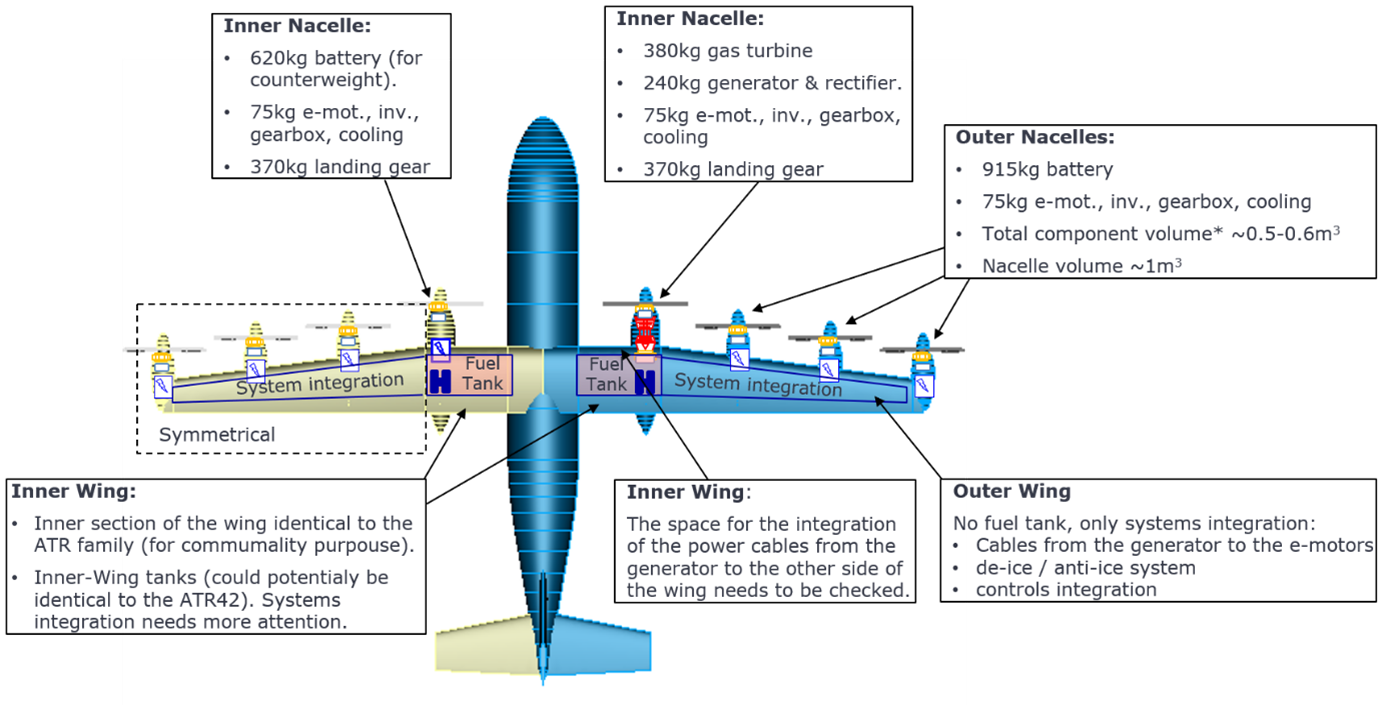
Figure 1: REG-RAD characteristics at the end of Loop 1
REGIONAL concepts
The REG-CON concept was further investigated by the BHL team, incorporating inputs on parallel hybrid-electrically assisted turboshaft and battery performance figures from the activities in the field of Energy Generation, and electric chain efficiencies and weight from the work in the area of Electric Components. A moderate fuel saving of 10% was achieved after optimizing the hybridization strategy, thanks to a large thrust-specific fuel consumption (TSFC) improvement of the propulsion system brought by the addition of battery electric energy to the thermodynamic cycle and the shaft. However, the concept is penalized by the large battery weight leading to an increase in Operational Empty Mass, and the gains can only be achieved on the typical mission, not on the design one.
The REG-RAD concept, radically changed to a full electric option with range extender at the end of Loop 0, was refined by the DLR team thanks to component updates, especially batteries and electric motors. The high efficiency of electric propulsion, its aerodynamic redesign using Distributed Electric Propulsion and higher aspect ratio, together with a better Power Specific Fuel Consumption (PSFC) due to the use of one single turbomachine in range extender mode, allowed to reach a high degree of aeropropulsive performance, compensating for the high empty weight due to batteries. Overall, a large block energy gain is achieved on the typical mission, and the benefits are maintained up to -22% on the design mission, which shows that this concept can contribute significantly to the achievement of the IMOTHEP targets.
For the next steps in Loop 2, it was decided to refine the REG-RAD concept, which has shown potential for large fuel and energy savings that need to be consolidated with high-fidelity studies (DEP performance, wing structural analysis, propulsive pods thermal and electrical efficiency). The REG-CON configuration, though less promising from a performance point of view, could be updated if significant improvement in component performances is demonstrated.

Figure 2: SMR-RAD design features at the end of Loop 1
SMR concepts
The SMR-CON (DEP DRAGON concept) was further investigated by the ONERA team, taking into account an updated turboelectric architecture. The refined concept exhibited a sharp decrease of the performance figures, notably a larger fuel burn than the 2035 baseline. This is mainly due to a larger turboshaft's PSFC, and some lower performances of the electric systems for the components designed within IMOTHEP compared to initial assumptions. Computed sensitivities show potential for improvement and will be exploited to adjust the turboelectric architecture in Loop 2. A large increase in fidelity representation was achieved for the SMR-RAD concept investigated by the NLR team, both from the aeropropulsive point of view with the update of the airframe (SMILE external shape) and the detailed design of fan and intakes, and from the electric chain point of view (generator, cables and electric motors updates). Results for this turboelectric concept are similar to the SMR-CON concept: a better fuel saving is achieved (roughly -2 to -4% compared to the baseline concept) but brought by the blended wing body configuration (BWB) rather than by HEP. It is envisioned that advanced technologies such as superconductivity will be mandatory to achieve the IMOTHEP targets for the SMR mission.
Finally, at the end of Loop 1, none of the SMR concepts appear to be able to achieve the IMOTHEP targets, with reasonable projection of the electric chain performances. However, the most promising option remains the SMR-RAD thanks to its high level of aeropropulsive integration. Trends demonstrated on the SMR-CON configuration will be used to identify the best options for the electric propulsion chain, and an option of superconductivity will be studied.
The aircraft integration studies in IMOTHEP have entered a new critical step with the first feedback on component design studies. Flowing from aeropropulsive design, electric architecture definition, energy generation and electric power technology studies, updated technology figures and new insights into integration constraints are progressively refreshing our four aircraft concepts. Meanwhile, as the design becomes more and more intricate, advanced collaborative methodologies are required. On this point, an exchange with the H2020 AGILE4.0 project will be beneficial.
.png)
Fig. 1: Features of the REG-RAD plug-in hybrid configuration (credit DLR)
Towards the refinement of aircraft concepts
To foster collaboration between specialists, work within the ongoing multidisciplinary design loop is progressively organized per aircraft configuration, even if some technological developments remain common to several concepts.
For the REG-CON configuration (boosted turboshaft concept led by BHL), a significant focus was placed on battery integration, incorporating feedback from AIT and KIT battery experts, and downselecting the most promising battery pack location, considering operational constraints provided by the airframer Leonardo.
The REG-RAD configuration team (distributed propulsion plug-in hybrid led by DLR) has proposed a revision of the hybridization strategy, defining a concept flying fully electric for short missions under 200 km and using a range extender for longer distances. Special attention is paid to the propeller-wing interaction assessment with the help of aeropropulsion experts.
.png)
Fig. 2: Baseline airframe of the SMR-RAD configuration (SMILE airframe, credit ONERA)
The SMR-CON configuration (transonic turboelectric distributed fan concept led by ONERA) now incorporates consolidated data on electric motors and electric generator design and will be a use case for a sensitivity study on the (challenging) voltage level between 1kV and 3kV, highlighting the benefits and drawbacks.
The SMR-RAD configuration team (turboelectric BWB concept with distributed fans and BLI effect led by NLR) concentrated on the refinement of the airframe design based on the ONERA SMILE configuration, and the detailed design of fan and intake arrangement to enable CFD assessment of the BLI effect. Superconducting machines are currently being studied for this configuration.
.jpg)
Fig. 3: Design structure matrix of the SMR-CON configuration (credit ONERA).
Mastering complexity using advanced design methodologies
Given the increasing data flow between experts, it is crucial to maintain consistency between assumptions at the component, architecture and aircraft levels. A particular effort has been made to provide an inventory of the models and their interface with the aircraft design process.
In that perspective, extended Design Structure Matrices of each concept were created to identify the contributing disciplines and the data exchange between them, utilizing the partners’ expertise in data format, process automation and MDO technologies.
To go one step further, a joint workshop with the H2020 AGILE4.0 project will be held in the coming weeks, highlighting the complementarity of the tools and approaches developed in this methodological project, and the concrete aircraft design cases of IMOTHEP.
Next steps
As the multidisciplinary design loop nears its end, preliminary design reviews will be organized for each of the four concepts, enabling to feed the gap analysis of HEP technologies and to downselect the most promising configuration for regional and SMR missions. The detailed design loop will then consist in refining the layout of the concepts and assessing their performances alongside the operational mission, including transient effects.
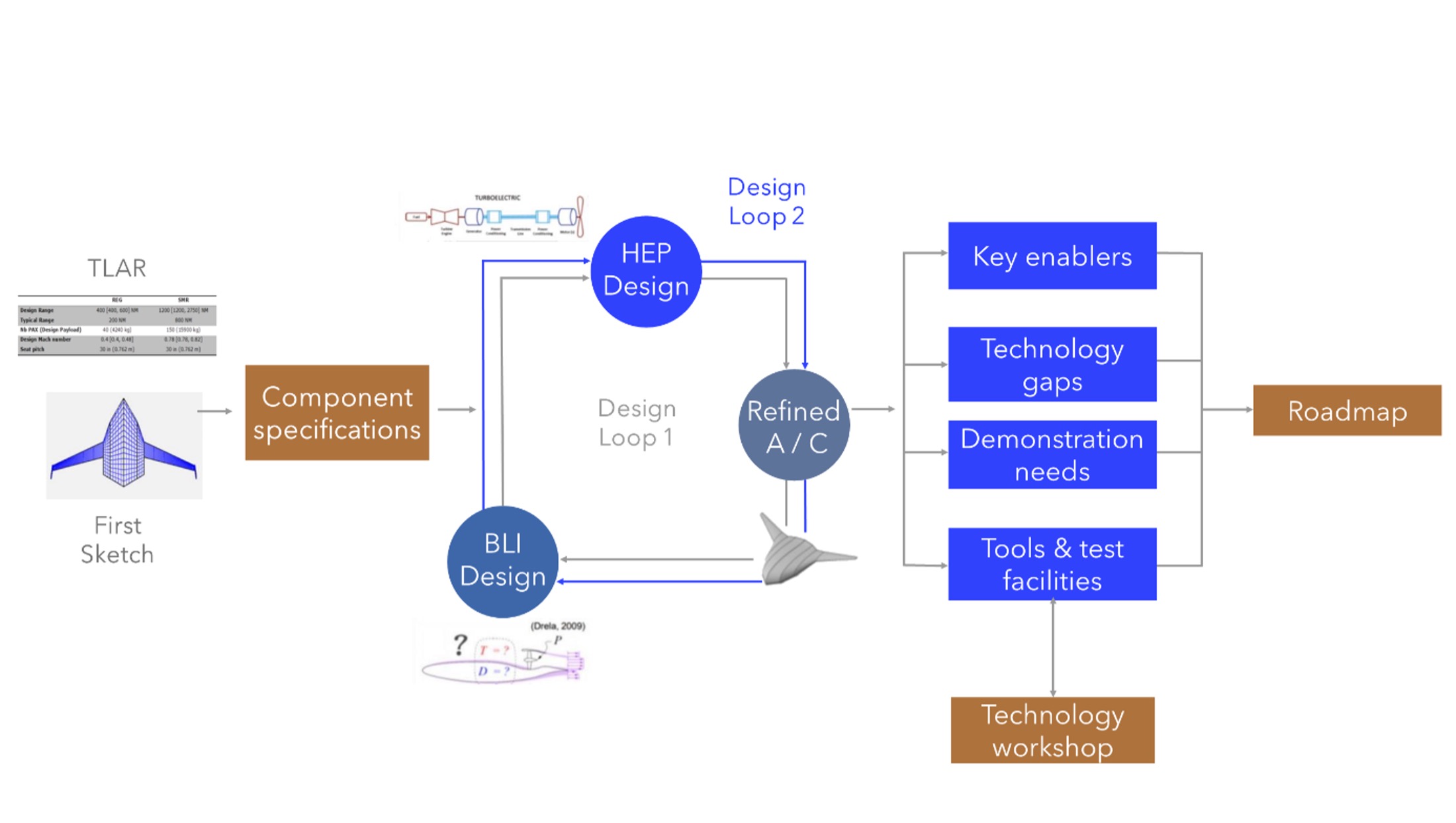
IMOTHEP vehicle concepts: Transition from loop 0 to loop 1
Aiming at providing consistent aircraft configurations to integrate HEP architecture and components and evaluate the benefits, this Overall Aircraft Design activity has recently achieved an important milestone: based on TLARs and technology assumptions, design teams have proposed first layouts for the four configurations under study and started to feed the component studies with targets and interface requirements.
Conceptual Design Loop: First regional and SMR aircraft versions
The second half of 2020 was dedicated to the consolidation and synthesis of the overall aircraft design activities by the design teams. Based on TLARs (Top Level Aircraft Requirements) issued by Leonardo (for regional aircraft, REG) and Airbus (for short- and medium-range aircraft, SMR), two configurations per mission were proposed:
- 1. A so-called “conservative” version, keeping the tube and wing architecture, using a boosted turboshaft for the regional aircraft (coordinated by BHL), and using underwing distributed propulsion for the SMR (DRAGON configuration, coordinated by ONERA).
- 2. A so-called “radical” version, aiming at more innovative aeropropulsive integration, using distributed propellers for REG (coordinated by DLR), and a Blended Wing Body accommodating Boundary Layer Ingestion for SMR (coordinated by NLR).
These studies enabled to provide interface requirements and performance targets to the component designers, allowing to kick off the preliminary design loop (project “Loop 1”) through a second Design Workshop.
Next steps: Towards the integration of HEP components
As activity is ramping up in the other work packages, the Overall Aircraft Design teams are preparing to accommodate the incoming results regarding aeropropulsive integration (especially DEP and BLI modelling), energy generation solutions (batteries, turboshaft, generators, fuel cells), electric power unit (cables, converters, power cores, electric machines), and architecture performance (power and thermal management, safety, EMC). Refining the performances and layout of the propulsive power train will enable to refine the aircraft design, and extend the exploration to novel options, using enhanced design processes relying on collaborative technologies (with interactions with the H2020 AGILE/AGILE4.0 project).
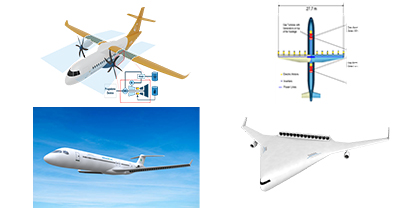
Concepts under investigation for REG (top) and SMR (bottom)
Despite the Covid-19 situation, these activities could follow a nominal hot start since the beginning of the project. A first design workshop was organized to define the set of TLAR under the supervision of Airbus and Leonardo, to determine the configurations to be explored and the HEP initial technology assumptions. The conceptual design loop has been kicked off and the four design teams (BHL, DLR, NLR and ONERA) are producing the first results on near- and long-term concepts for both REG and SMR missions, and feeding subsequent research components with initial designs. Meanwhile, teams from CHALMERS, CIRA, INCAS and ILOT are working on specific disciplinary modules, such as Boundary Layer Ingestion (BLI), HQ (Handling qualities) and structural sizing, which will be used in the design loops.

Aeropropulsive Design

Objectives
These activities target overall aeropropulsive integration. More specifically, they aim to identify key propulsor design parameters, optimize the overall powerplant/platform layout and interaction, and assess the potential performance of the more radical architectures. The topics range from specific propulsor module design to overall energy accounting methods and also cover noise assessment.
Progress
After refinement of each radical platform layout (REG-RAD and SMR-RAD) regarding propulsion integration, recommendations about optimized layout in terms of propulsors features and location have been issued to WP1. Assessment toolchain for overall energy behavior and noise is ready to be applied to the final configurations combining all disciplinary outcomes from the project investigations. Methodologies like body force model have also progressed in order to assess the aeroelastic behavior of ducted fan under distortion.
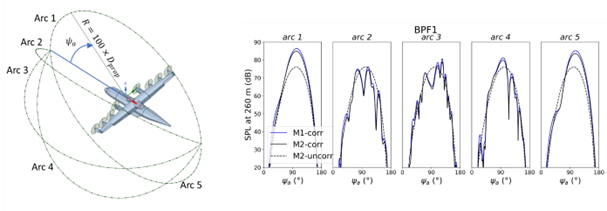
Figure 1: Example of benchmark noise directivities for REG-RAD; fully numerical (M1) and low order (M2) methods
REG-RAD aeropropulsive integration
After the optimization of propeller blade shape, number of thrusters, rotation directions and overall location of propulsors on the wing, a final layout for the REG-RAD configuration has been selected. The optimization studies have shown that wingtip propellers do not reveal significant benefit, unless specifically designed ; wingspan extension has higher potential.
In parallel to these overall optimizations, anticipating the final noise assessment activity, a benchmark of low order and fully numerical methods to assess tonal noise levels has been conducted, showing good agreement between the fully numerical approach based on CFD and FW-H complete formulation, and the low order models based on simplified FW-H approach.

Figure 2: Exergy approach for BLI assessment; first test run
SMR-RAD aeropropulsive integration
A first assessment of the SMR-RAD overall energy behavior has been performed, in order to proof-check the exergy computation toolchain on such a complex distributed architecture.
In parallel, progress on the ability to use the body force modelling approach to encompass aeroelastic behavior of a compressor under distortion has been achieved with encouraging perspectives on this toolset to be a lighter option for aeroelastic activities than legacy unsteady computational methods.
Outlook
The next steps will be to perform the final assessment of both SMR-RAD and REG-RAD, as well as a detailed energy balance of the SMR-RAD configuration with respect to boundary layer ingestion, enabling exact accounting of its energy efficiency.
Following the setup of a low-fidelity toolset to guide Loop 1, further refinements were made for both the distributed propellers configuration (for the Regional-Radical configuration REG-RAD) and the distributed fan layout with boundary layer ingestion (for the Small- and Medium-Range Radical configuration SMR-RAD). The results have been incorporated into airframe optimisation to approximate the best possible configuration for each application segment.
REG-RAD aeropropulsive integration
After the reorientation of the REG-RAD platform towards a hybrid plug-in aircraft, the resulting significant evolutions of thrust requirements have led to an updated blade geometry. The previously developed 1D parametric toolset, which is based on the lifting line and actuator disk and aimed at predicting the overall interaction between adjacent propellers and wing, has been further refined and successfully calibrated against RANS simulation. It was used to assess the impact of the individual propeller rotation directions on the overall integrated propulsive efficiency.
In parallel, configuration optimisations have been initiated as part of the high-fidelity studies, focusing on low-speed capabilities by optimising the position of the propellers and refining the nacelle shape.

Figure 3: Parametric study of the direction of rotation of the propellers
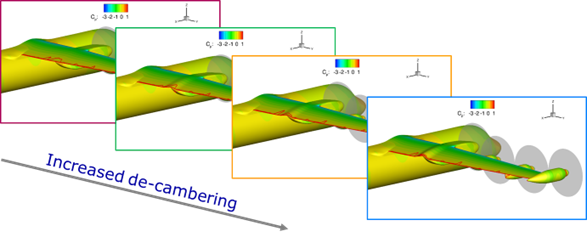
Figure 4: Impact of nacelle de-cambering on REG-RAD configuration
SMR-RAD aeropropulsive integration
A complete design of the propulsor rotor and Outlet Guide Vanes (OGVs) was performed and assessed under a generic distortion profile, confirming the orders of magnitude of integrated efficiency from the preliminary assessments carried out previously. In parallel to the propulsor design, a specific optimisation of the inlet geometry was initiated, taking into consideration the airframe layout constraints (integration of exhaust, high-lift devices …) to minimise the total pressure loss.
Finally, toolchains for the final assessment, including the exergy balance of the SMR-RAD platform and the noise of the REG-RAD platform, were set up and tested.

Figure 5: Results of SMR-RAD S-duct initial inlet design
Outlook
The next steps will be to complete the optimisation of both platforms and perform a final assessment of both SMR-RAD and REG-RAD, as well as a detailed energy balance of the SMR-RAD configuration with respect to boundary layer ingestion, enabling exact accounting of its energy efficiency.
To guide the Loop 1 aircraft design activities, low fidelity propulsor performance models were created for both the distributed propeller configuration (for the Regional Radical configuration) and the distributed fan layout with boundary layer ingestion (for the SMR Radical configuration). In parallel, modular optimization activities made progress in terms of fan design (able to deal with boundary layer distortion profile), parametrization of inlet shapes (to maximize pressure recovery), and nacelle shapes (integrable into the BWB fuselage layout).
REG-RAD aeropropulsive integration
Several parametric propeller designs were created based on the requirements of Loop 0. Side studies allowed to determine the dependency of propeller efficiency on thrust distribution over the wing. A fast prediction tool for wing aerodynamics covering high- and low-speed conditions has been set up to be combined with propeller performance, enabling the Integrated Vehicle Design team to get a consistent parametric view of expectable propulsive efficiency on the Regional Radical configuration.
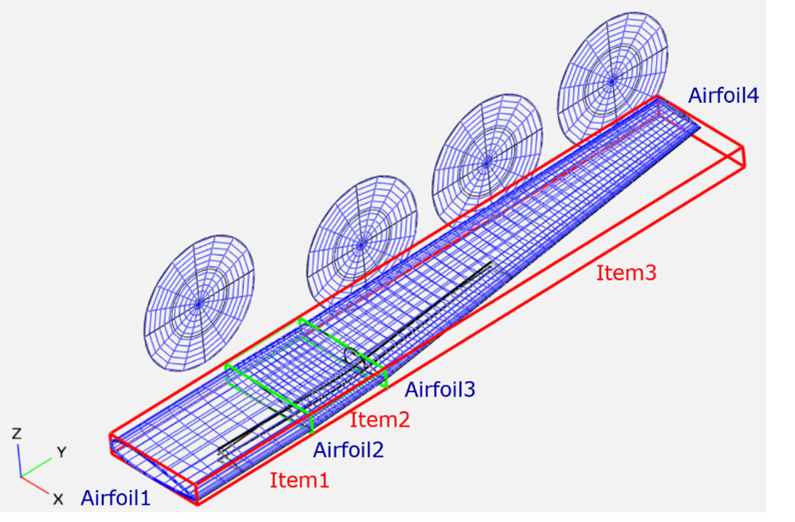
Figure 1: Parametric wing model for aeropropulsive integration accounting
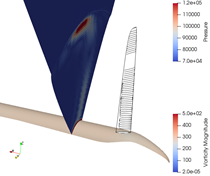
Figure 2: Preliminary propeller design
SMR-RAD aeropropulsive integration
The integrated high-level parametric study from the design phase, which used preliminary effects of boundary layer ingestion on propulsive efficiency, allowed us to determine the optimal number of ducted propulsors for the SMR BWB configuration. In the subsequent design phase, the fan module characteristics were determined. The optimization currently underway will enable us to select the most efficient configuration, taking into account the effects of boundary layer distortion.
Together, European and Canadian partners parametrically defined inlet and nacelle geometry to enable an optimization study that considers the geometric integration constraints for the fuselage layout.
Finally, methods and toolchains have progressed through the ducted fan body force modelling to assess off-design behaviour, the overall energy and exergy accounting of this complex and close-coupled airframe-propulsion configuration, and the process for assessing noise sources and community noise.
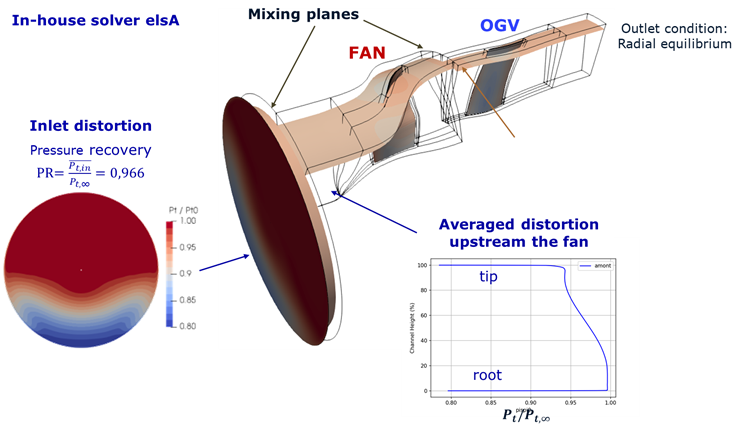
Figure 3: Integrated fan module design under distortion
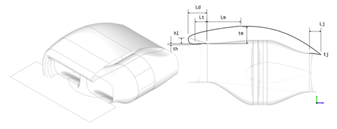
Figure 4: Propulsors nacelle geometry parametrization
Outlook
The next steps will be to:
- 1. optimize both configurations with a higher degree of fidelity, using the refined set of specifications elaborated within the “Integrated Vehicle Design” phase;
- 2. conduct the final noise assessment of both SMR-RAD and REG-RAD configurations;
- 3. perform a detailed energy balance of the SMR-RAD configuration with respect to boundary layer ingestion, enabling exact accounting of its energy efficiency.
Most of these activities will gradually start in the coming months. However, the "Aeropropulsive Integration" activities have started gathering state-of-the-art propulsive efficiency applicable to IMOTHEP aircraft architectures to support the down-selection of preliminary platform features for the integrated vehicle design.
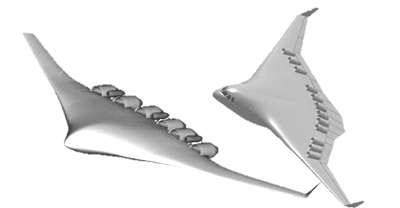
Design study to maximise BLI effect (AIAA 2009 -1132)

Electrical Architecture

Objectives
The architecture of a hybrid-electric propulsion system defines in which way sources and intermediate storages of energy are connected with consuming propulsion systems. By its topology, the electrical architecture defines key degrees of freedom for overall aircraft operation and thereby contributes to safety and optimal use of energy.
- Redundancy is required for safety and reliability. Hazardous failure scenarios need to be avoided by a reconfiguration of the system in case of failure of any component.
- Reducing the peak load of generators enables weight savings through smaller component dimensioning and is achieved through modern energy management.
- Thermal capacities and heat dissipation limit the degree of freedom for energy management and also set power limits. Active thermal management is thus also part of the electrical architecture.
Progress
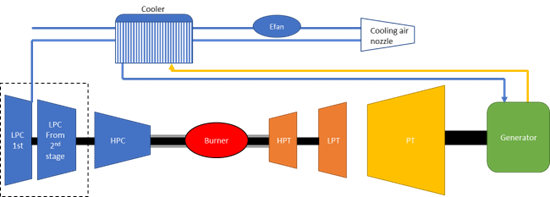
Figure 1: Schematic plot of the bleed/ram air cooler with the redesigned turboshaft
After the selection of all architectures, the feasibility of both power management and thermal management was a major focus point. Here we report on the most important findings for the thermal management of the electric architectures.
Results
Until a very late stage in the project the feasibility of the thermal management for the SMR architectures was in doubt. The two main critical points were the cooling of the electric generator near the gas-turbine and the cooling of the electric motors driving the propulsors. Both cooling tasks include the respective power electronics and in both cases the heat is transported towards the surface area using oil, where heat rejection into the air flow needs to happen. Due to the increased efficiency of the design of the electrical machines, we can now show a feasible path for the thermal management.
For the SMR-CON, the cooling of the generator and power-electronics has been designed using a separate ram-air channel that supplies additional air-cooling when the fuel cooling is insufficient. To deal with peak cooling demand a fuel recirculation strategy has been devised.
For the SMR-RAD, a second alternative cooling concept was designed that is more integrated into the gas-turbine using a bleed-air cooler and additional cooling using the guide vanes. One possible scheme is depicted below. Further integration with a dedicated by-pass flow is also feasible.
For the cooling of the propulsion system, a preliminary cooling design demonstrates that the cooling is feasible with the air-stream that is near to the hub of the propulsion fan. The additional induced drag is within feasible margins.
Given the penalty of the cooling concepts regarding additional weight and additional drag, it is clear that efficiency takes priority over power-density when designing electric components.
Outlook
Towards the end of the project, WP3 will address the cable routing and the power management of the regional radical architecture concept. Furthermore, a compendium for the key figures of the technological bricks will be published.

Figure 6: Example of evaluation of the distance to avoid the bundle derating for two DR4 cables
One of the most critical points for the performance of the electric architecture is the cooling of the power source. For both the conservative and the radical SMR concept, this consists in a pair of gas turbine generators. Whereas the gas turbine runs at high temperature, the heat load of the electric machine and its corresponding power electronics for the AC-DC conversion is of significantly lower quality, requiring more cooling air.
Previous analysis resulted in heat exchanger design requiring peak dissipation of over 400kW into the air stream, despite using the fuel as an additional heat sink. Fortunately, newer generator designs researched in IMOTHEP’s studies in the area of Electric Components turn out to be more efficient, reducing the heat load of the electric machine by half. Combined with an adapted strategy for the fuel as heat sink, the peak heat load could be more than halved. This now enables a feasible thermal management design, albeit still having a significant impact on the drag force of the overall aircraft.
Another important topic is the spacing of the high-voltage cables in order to avoid excessive electrical insulation. With packed cables in a bundle, thicker insulation is needed to avoid electrical discharges between them. But heat dissipation is difficult in this case. “Adding space between cables helps decrease discharge risk and heating but increases spacing which may in turn affect structural mass. Both phenomena are simulated to optimise the space and thickness of the cables used. First results have been obtained using basic simulation studies (see Figure 7 for overheating simulation). To further validate these results, experiments are currently conducted at ONERA.
Outlook
For the regional concepts, WP3 will now put increased focus on the radical variant with its option of all-electric flight. Suitable power-management as well as further analysis of the safety and reliability are subjects of research.
-and-the-electric-propulsion-(right)-units.png)
Figure 1 Cooling of the power generation (left) and the electric propulsion (right) units
A major technical challenge in electrically driven propulsion architectures is thermal management. While electric drives can be very efficient and have comparably low heat losses, they also demand much lower operating temperatures. Finding a solution that adds little weight and causes little additional drag force but still works in all relevant environmental conditions is not an easy task.
Thermal Management of the SMR Architecture
Under NLR’s lead, the IMOTHEP partners develop a thermal architecture for the conservative short- and medium-range (SMR-CON) conceptual aircraft. The task consists of two parts: The cooling of the power generation units and the cooling of the electric propulsion unit.
Cooling of the power generation unit
In the SMR-CON configuration, two separate gas turbines drive the generators for the entire electric power demand. The required fuel flow should be used for cooling as much as possible. An intermediate oil flow transports the heat from the devices to the fuel. However, the fuel flow on its own is insufficient, even when combined with the air intake required for combustion. Various ways of increasing the airflow are being investigated, such as an additional fan, a separate ram-air channel or the excessive use of engine bleed air.
Cooling of the electric propulsion unit
For each of the distributed electric propulsion units, a local cooling solution is required that uses the local airflow as a heat sink. The main design question here is whether to use direct air cooling or liquid cooling. A local liquid cooling loop may enable higher power densities for the electric machine as well as a combined cooling of the motor and power electronics.
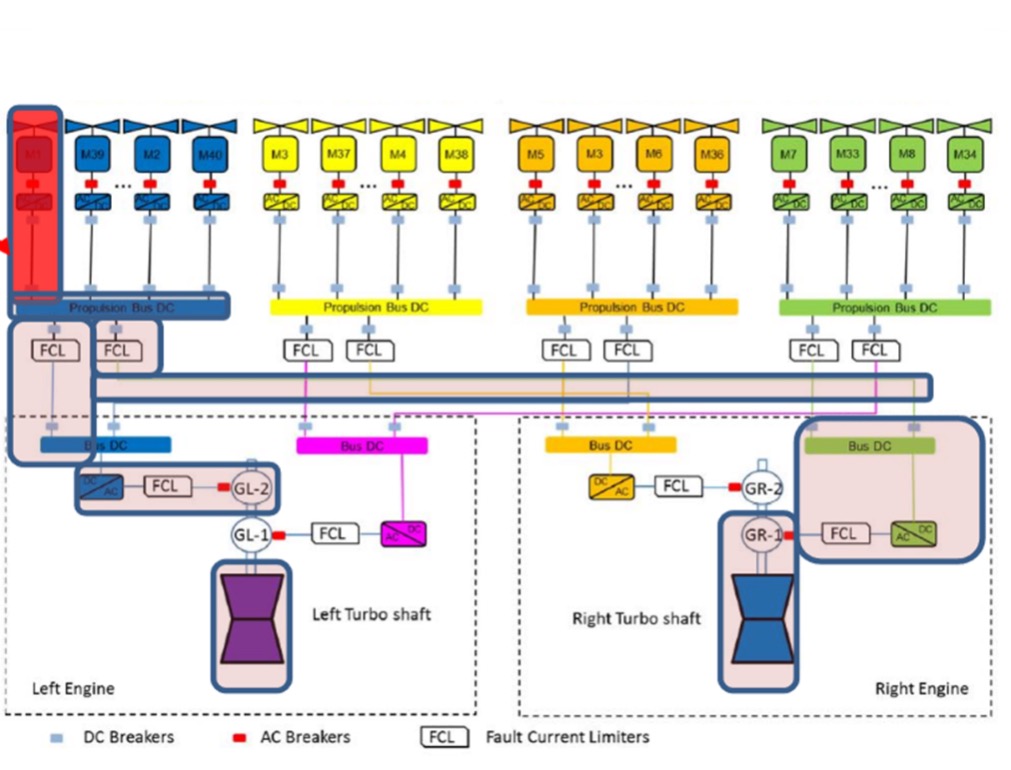
Baseline electrical architecture under examination
One of the key aspects when designing an electric architecture is to provide sufficient redundancy for the overall propulsion system to ensure safe and reliable operation. A first analysis has been performed by the University of Strathclyde on a distributed propulsion architecture.
Reliability of distributed electrical propulsion architectures
While hybrid-electric flight shall be to the benefit of our environment, it shall not be to the detriment of passenger safety. Beyond pure safety aspects, reliability is also demanded for the everyday cost-effective operation of modern aircraft. Unscheduled maintenance is to be avoided and the availability of the aircraft must remain high.Hence the University of Strathclyde has initiated a comprehensive reliability analysis using dedicated stochastic models. For each component of the aircraft's electrical architecture, a corresponding failure rate is assumed and with the modelled interaction of these components in the electric architecture, the reliability of the aircraft can be approximately forecasted for its entire operating lifetime. The current design proposal for an aircraft configuration for a conservative short-medium range plane includes 24 Electric Propulsion Units (EPUs) that are distributed among its two wings. The figure below indicates the path of components that may lead up to the failure of an individual EPU.
First results indicate that the probability of aggregate EPUs failures is low, in line with safety requirements, however individual failures of a single EPU might not be uncommon (being dominated by a failure in the EPU drive-train itself). Thus, there is a need to further understand how an individual EPU failure can be handled in aircraft operations, the impact of their maintenance on the overall operations and whether certain failure rates can be reduced as part of the EPU design. There is still significant potential for design optimization by better understanding the impact of a failing EPU.Although already providing valuable insight, the analysis is still at an early stage: the impact of lightning strikes, short-circuit faults, potential common mode failures and the inclusion of the critical thermal management system require further work and will impact the result of this preliminary analysis.
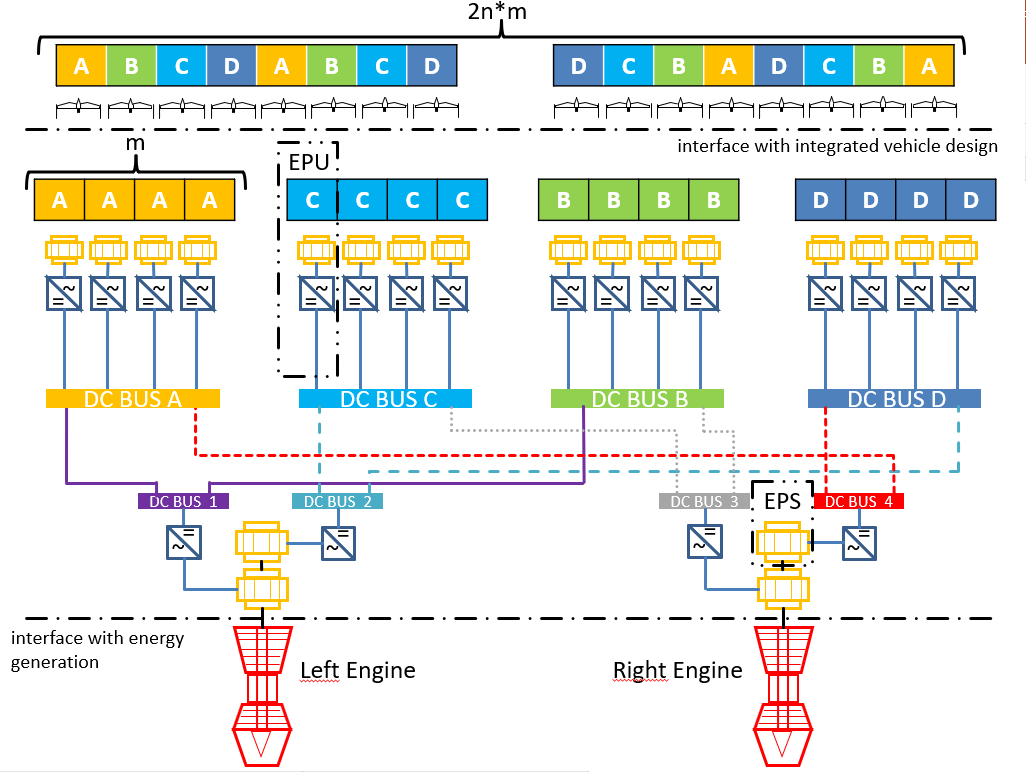
Initial architectures (SMR): Schmollgruber, P., Donjat, D., Ridel, M. C., Atinault, O., & François, C. P. (January 2020). Multidisciplinary design and performance of the ONERA Hybrid Electric Distributed Propulsion concept (DRAGON). AIAA Scitech 2020 Forum.
With hybrid-electric propulsion still in its infancy, the design space of potential architectures is quite open. For its exploration, agreeing on technology assumptions is key. Power densities and efficiencies of electrical machines are just one example. An extensive set of these key-figures has been collected, reviewed and selected for the ongoing design effort. Since aircraft design is a highly integrative and multi-faceted task, the key interfaces for communication exchange between the partners have been identified.
Given these prerequisites and the initial aircraft concepts, the team dedicated to electrical architecture is now designing its first conceptual electrical architectures for future SMRs and for regional aircraft.

Energy Generation

Objectives
The overall goal of this technology stream is to study, design and integrated the components needed for generation and storage of electrical energy on the four aircraft platforms considered within IMOTHEP.
These activities are in close connection with the Integrated Vehicle Design, which provides the general energy and power level needed for the selected aircraft platforms. Basing on those numbers, the team involved will provide, in close connection with the Integrated Vehicle Design:
- suitable hybrid-electric propulsive architectures (advanced thermal engine and innovative electrical machine)
- relative performance estimations
- dedicated studies related to emerging all-solid-state battery technologies suitable for aerospace applications and fuel cells
- dedicated studies on the overall technology maturation needed for each platform
Two out of the four most promising hybrid-electric architectures currently under evaluation are presented below.
Progress
As the project draws to the end, main activities for the past months have been the closure of all trade-off studies and the delivery of the results for each aircraft configurations. The activities first focused on refinement of results at the end of Loop 1 where – for example – few things were assumed and left to be defined for Loop 2. Furthermore, all engine architectures benefitted from a better understanding of aircraft requirements which enabled a more optimized and realistic engine architectures
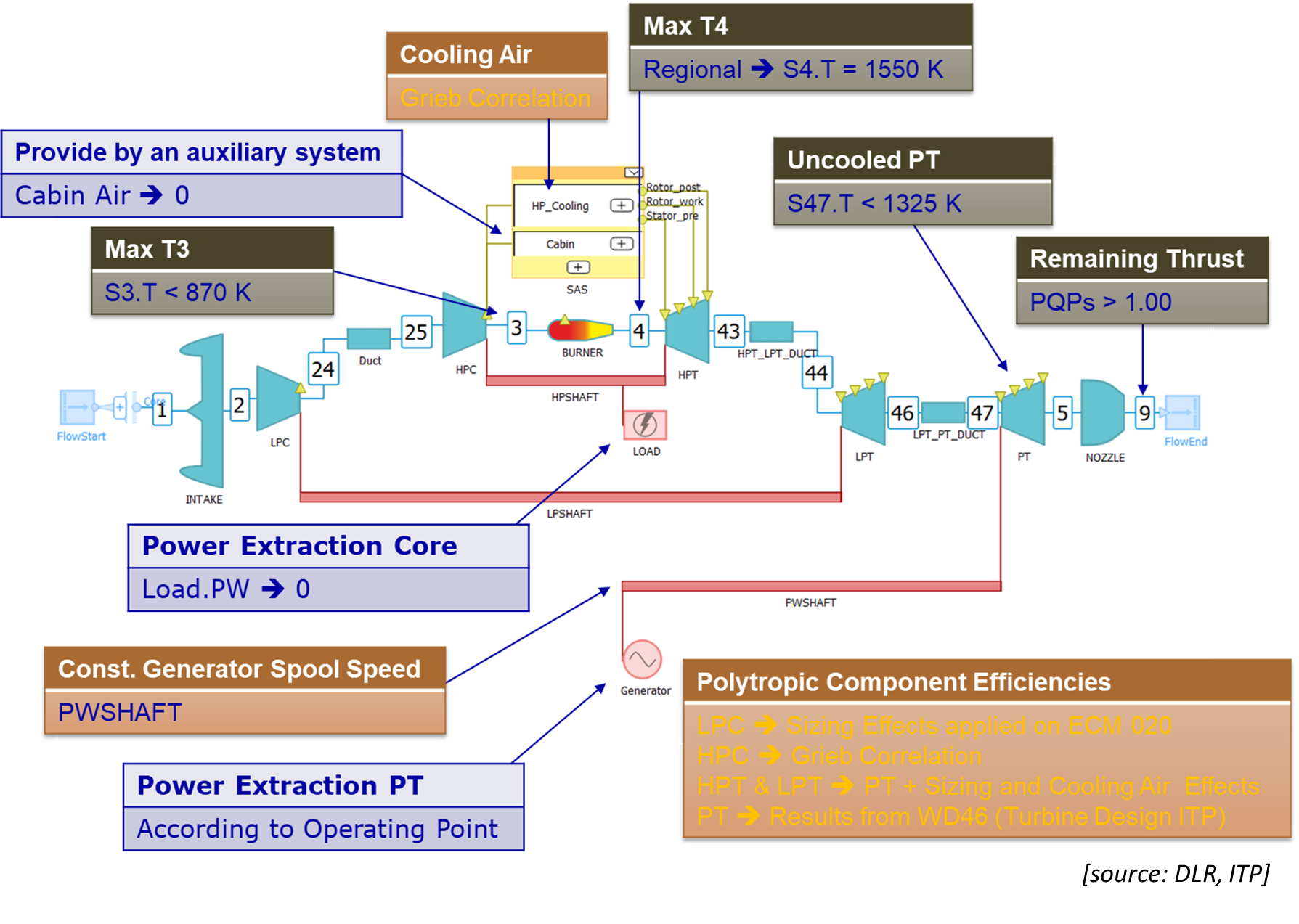
Figure 1 : Example of thermodynamic cycle scheme derived for Regional-Radical configuration [source: DLR, ITP]
Results
Conceptually speaking, the approach used during Loop 2 was not dissimilar from the one used during Loop 1. Similarly to the first half of the project, results were achieved through a classic iterative process flowed down from preliminary 2035 expectations and assumptions (state-of-the-art benchmarking). However, the starting point for Loop 2 was a refined set of top-level aircraft requirements which were derived from a better understanding airframers had at the end of Loop 1. The studies on engine architecture could then move to refine preliminary assumptions used during Loop 1. The results were then transformed in a “best engine architecture” defined by a thermodynamic cycle meeting all requirements defined by IMOTHEP’s Integrated Vehicle Design (general aircraft missions, power/thrust requirements, fuel consumption targets, altitudes and speeds etc.).
The output of this work was complete gas turbine architectures, including flow path performances, integration aspects, cooling/thermal aspects, estimates of geometries and weights and integration with electrical generators.
Similarly, sizing of the electrical machines is being finalized, including trade-offs in geometries, materials, electromagnetic technologies, weight, loading, integration/coupling etc. Thermal Management System and relative aircraft-engine integration was also the objective of Loop 2. This allowed a better understanding of the overall engine architecture which resulted in more realistic energy generation chain performances.
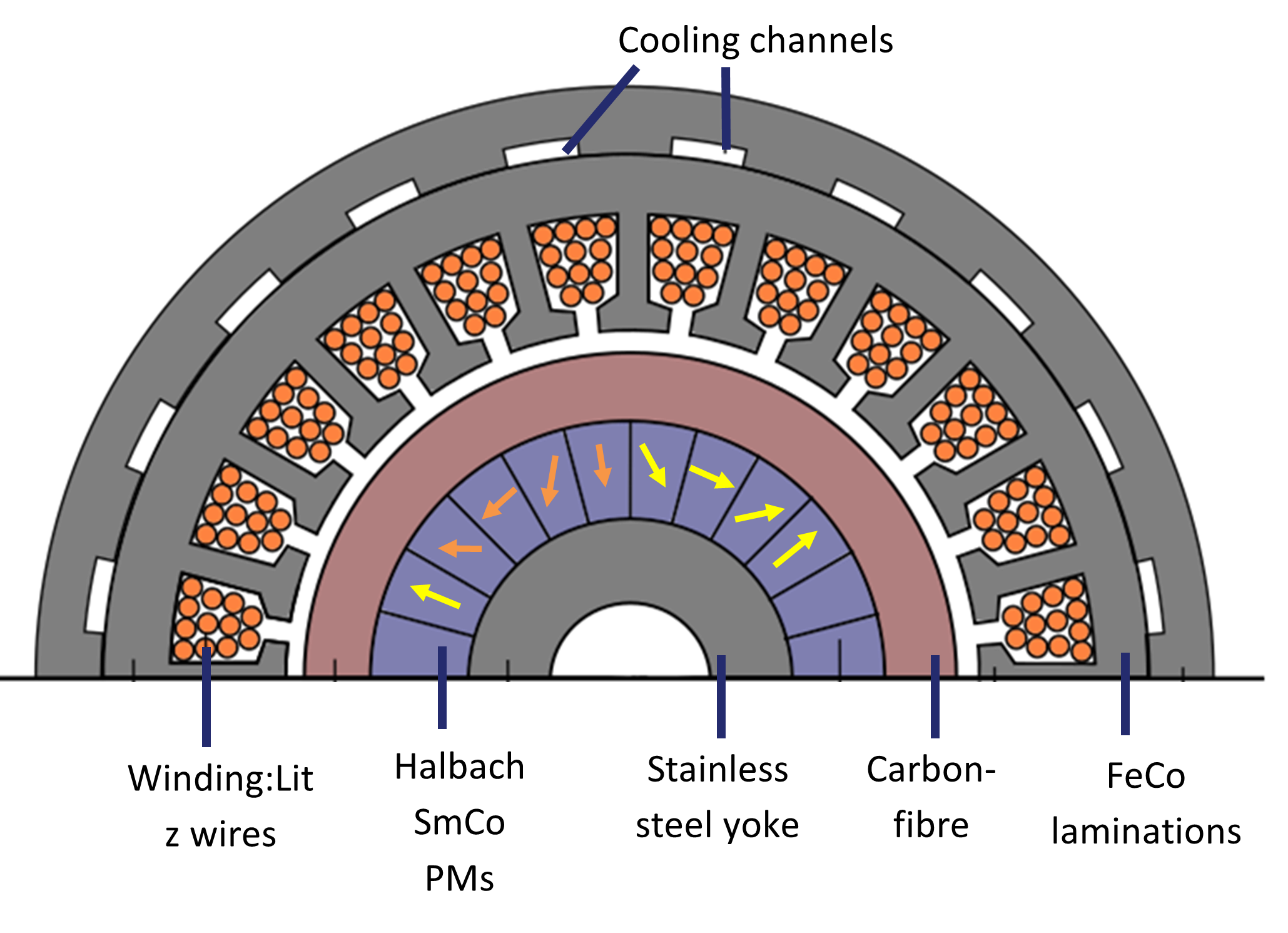
Figure 2: Generator architecture for Regional-Radical configuration [source: UL]
The work came to a conclusion regarding batteries and fuel cells. On batteries, the team explored and benchmarked different technologies, especially polymer-based Li-ion batteries, including experimental and analytical research. The results were provided to other IMOTHEP work packages. Results included but were not limited to:
- Power density, gravimetric and volumetric energy densities for various configurations of batteries (high power, high energy etc.);
- Battery discharge efficiency in various operational modes;
- Mass and volume of batteries;
- Estimation of heat released from batteries based on experimental data.
On Fuel Cells, final results included a system performance modelling tool, system weights, efficiencies, consumptions etc., as a function of flight conditions. On this basis, the necessary input were provided for IMOTHEP's activities in the area of Integrated Vehicle Design for an initial (top-level) set of considerations.
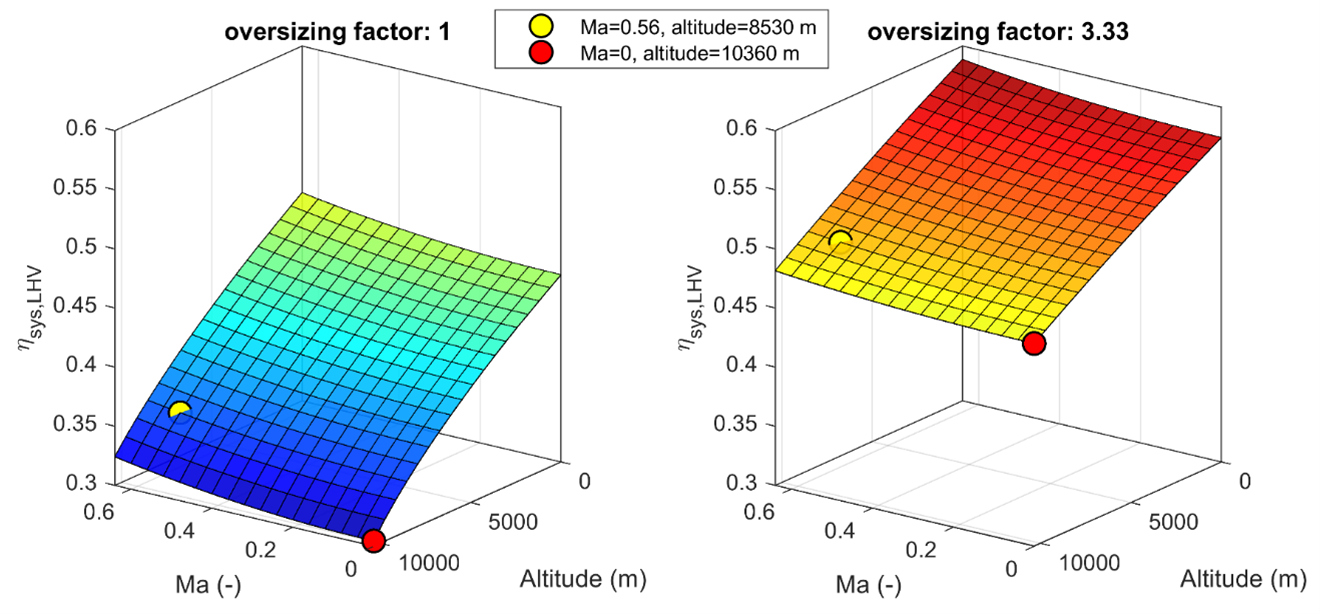
Figure 7: Example of system and sub-system modelling for FC as presented by DLR
The goal of the activities in the field of Energy Generation over the past months has been to consolidate the assumptions and refine the results delivered on completion of Loop 1. This was directly fed into the Multidisciplinary Design Process, which was then able to assess the impact of the propulsive chain on the overall aircraft design. The activities in the area of Energy Generation also included an optimised propulsive system with a gas generator and an electrical machine, which was the result of various integration trade-off studies on geometries, technologies, weight etc. Furthermore, we have conducted advanced studies on batteries and fuel cells, which are both considered paramount in the current decarbonisation efforts.
A similar preliminary design approach was adopted by all IMOTHEP partners for each aircraft configuration. Loop 1 was achieved through a classic iterative process that started from preliminary 2035 expectations and assumptions (SoA benchmarking), then moved to several trade-off assessments and optimisation, and finally resulted in a “best architecture” solution that meets the requirements defined within the framework of IMOTHEP’s Integrated Vehicle Design (general aircraft missions, power/thrust requirements, fuel consumption targets, altitudes and speeds etc).
The output of this work was complete gas turbine architectures, including flow path performances, integration aspects (mainly integration with the electrical machines rather than aircraft-engine integration), cooling aspects, and preliminary estimates of geometries and weights.
Similarly, preliminary sizing of the electrical machines has been carried out, including trade-offs in geometries, materials, electromagnetic technologies, weight, loading, integration/coupling etc. On the other hand, the Thermal Management System and relative aircraft-engine integration will be the objective of Loop 2, apart from some technological refinement studies necessary to re-evaluate optimised Integrated Vehicle Design requirements.
Regarding batteries, the team explored and benchmarked different technologies, especially polymer-based Li-ion batteries, including experimental and analytical research. The results were provided to other IMOTHEP work packages. Results included but were not limited to :
- Power density, gravimetric and volumetric energy densities for various configurations of batteries (high power, high energy etc.);
- Battery discharge efficiency in various operational modes;
- Mass and volume of batteries;
- Estimation of heat released from batteries based on experimental data
Regarding the research work on Fuel Cells, some preliminary results include a complete system and subsystem performance modelling tool, system weights, efficiencies, consumptions etc., as a function of flight conditions. On this basis, the necessary input can be provided for IMOTHEP's activities in the area of Integrated Vehicle Design.
Activities related to “Energy Generation” have made considerable progress, notably in defining more detailed aspects of the propulsion systems. The project team has started to investigate the effects of generator dynamics. Furthermore, the partners involved in the field of battery technology are in constant exchange on battery modelling with the partners involved in the aircraft design loops. Work is also underway to revamp the fuel cell activities.
Technical progress and results
Recently, several aspects of the different turbogenerators to be evaluated have been further detailed, for example a more robust definition of the internal static structures and the locations of the mechanical systems (such as bearings). This enabled progress in the initial phases of combined dynamic response studies on generator integration.
Discussions on broader aircraft integration issues have helped to better understand the management of thermal loads in the hybrid propulsion systems studied in the programme, as well as the alternatives to different arrangements for the system, with some configuration trade studies still ongoing.
Following an update on the requirements and configuration of the platform after the initial design loop, the initial revision of the gas turbine system used in the Regional radical configuration has started.
The collaboration and coordination between the partners regarding the batteries and their integration in the investigated platforms on which they are used in the programme has been intensified.
A revamp of the activities involving the development of an alternative propulsion system for regional aircraft based on fuel cells has been conducted together with the partner in charge of the activity, with revised milestones for the integration of the results to benchmark at aircraft level the positioning of these systems relative to the baseline hybrid-electric systems studied for regional aircraft.
Outlook
Within the topic of “Energy Generation”, next steps will be
- 1.completion of configuration trade studies for alternatives to the thermal management system with the team from the design loops;
- 2.report on the results from the dynamic generator response activity;
- 3.development of the updated fuel cell system sizing for application in regional aircraft
- 4.preparation of the second design loop activities at program level.
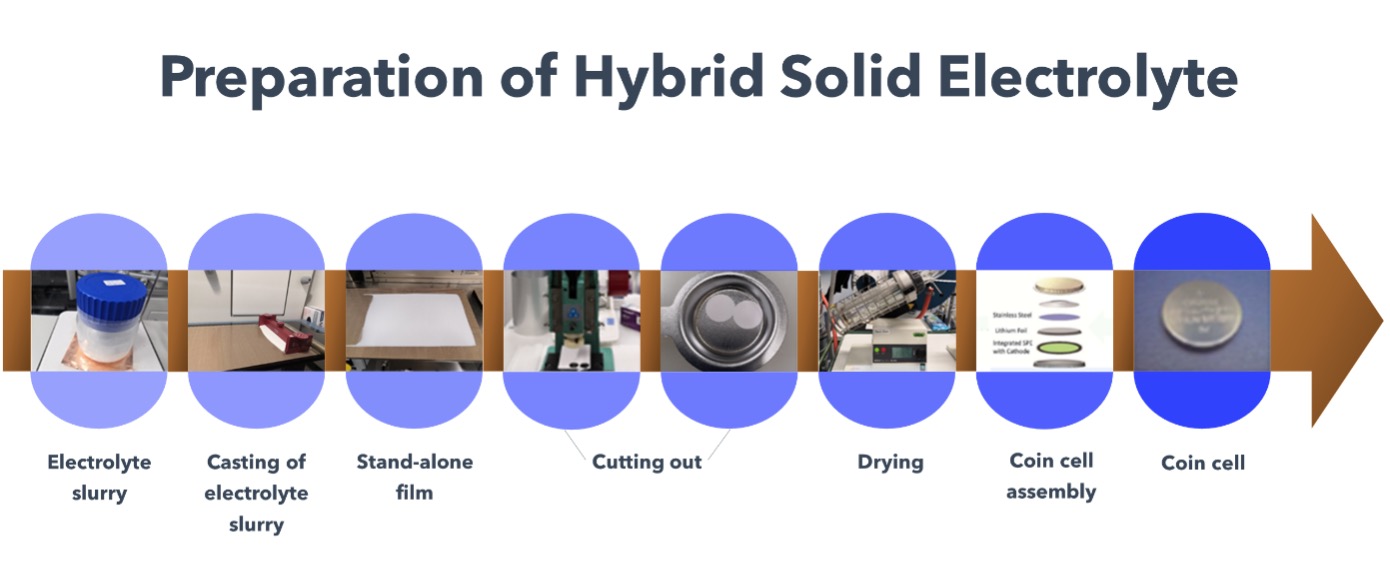
Completing the initial designs of the energy generation systems for the different aircraft studied represents substantial progress in the project activities. Three different turbogenerators together with an assisted turboshaft and a propulsion system based on fuel cells have been designed. The ongoing battery laboratory tests are reverting advances in cell configurations to define the battery performance model.
Technical progress and results
Dedicated energy generation systems have been designed to meet the power demand specifications of the four aircraft configurations defined within IMOTHEP. After the definition of the thermodynamic cycles, the design and sizing of the main components in the gas generator flow path as well as of the power turbines have been defined. A preliminary positioning and integration of the dedicated electrical generators designed has been specified considering mechanical interfaces and the working environment of the generators. An initial cross-section of the gas path and general dimensions of the overall systems are now being defined. In addition to this, a dedicated propulsion system based on hydrogen fuel cells has been defined for one of the regional configurations. This last study shall serve as a benchmark for comparison with the hybrid-electric alternative.Regarding battery technologies, coin cell lab tests for All-Solid-State Batteries (ASSB) are continuing with more than 130 coin cell samples prepared and tested, delivering concrete findings on the exploration of the electrochemistry of the system with different configurations of Ni cathodes, hybrid electrolytes and Li metal anodes. Continuous data exchange is feeding the calibration of battery models developed within IMOTHEP that are also providing alternative cases for the experimental design. The battery models developed are already being used in aircraft studies within IMOTHEP.
Next Steps
Support the aircraft integration of the results and models created for the different propulsion systems and perform complementary studies on some of the modules developed in preparation for the next design loop
In the first semester of the activity, the main goal was to provide an overview of the technological state of the art and relative projection up to 2035 for both thermal engine and electrical machine. This was shared with the teams working on integrated vehicle design and supported in this way the first conceptual design of the aircraft for regional and SMR segments.

Electric Components

Objectives
This technology stream deals with the design of the electric components that will compose the core of the propulsion system of the hybrid-electric aircraft. The objective is to propose innovative solutions to match the requirements for all electric components that link energy generation or storage to mechanical power. Disruptive solutions such as superconductivity will also be investigated.
The main challenge is to develop an optimised technical proposal that meets the highest requirements for an aircraft in terms of weight and performance, as well as the project goal of reducing emissions. In addition, the studies conducted must take into account the future evolution of technologies to allow for evaluations that are compatible with the project schedule.
The team involved in this technology stream covers a wide expertise range (electrical machine, power electronics, EWIS, superconductivity, integration).
Progress
For this last step of design loop, the works have been performed on the refinement of conceptual and multidisciplinary design on electrical components’ perimeters. The main outputs are synthesis of different ways of optimization on the EPU sizing point and thermal consideration, electrical machine topologies and DC/DC converter. The quantitative and qualitative conclusions will serve to refine aircraft design during the L2 loop
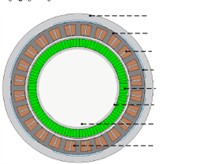
(a) Radial flux machine
Figure 1: Radial vs axial topologies for the electrical machines
Results
One way of investigation in the optimization of the EPU system is to analyses the mission profiles of each aircraft in order to identify a new design point leading to less constraints requirement. For the L1 loop, the design point retained as major requirement are the Take-Off (T/O) characteristics (continuous power and rotational speed). The objective is to detect if this point can be considered as a “transient point” and select a new continuous point so to under-constraint the requirement.
During the L1 loop, the hypothesis on the technologies maturity were conservative, meaning that the projections have been based on well-known technologies just pushed over their limits or with “medium” maturity compared to industrial approaches. In parallel of the investigations carried out in the L2 loop, a first definition of the technologies projection has been listed with a first evaluation of the gain led by this projection. The estimation is only carried out on the mass impact keeping in mind the target of an EIS in 2035, meaning a TRL6 in 2030. Based on that new assumptions, a new assessment of the electrical equipment and EPU system has been edited.
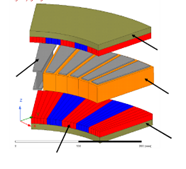
(a) Axial flux machine
Figure 1: Radial vs axial topologies for the electrical machines
Furthermore, a preliminary assessment of the additional mass of a Thermal Management System (TMS) for liquid cooled architectures is investigated. This approach is based on extrapolation of macro models related to the characteristic heat power rejection over mass ratio (kWth/kg) for different technologies of heat exchanger (HTX). This architecture is certainly not optimal but is considered as baseline to assess the volume and mass of the heat exchanger (HTX). Only two heat exchangers are considered: ACOC (Air-Cooled Oil-Cooler) and SACOC (Surface ACOC).
For the electrical machine, a specific analysis has been done for the REG-RAD aircraft configuration regarding the topologies. New supplier provides axial flux machine topology for the propulsion instead of radial flux machine. The objective of this part was to evaluate the impact of such technology with the REG-RAD requirements considering air or liquid cooled options.
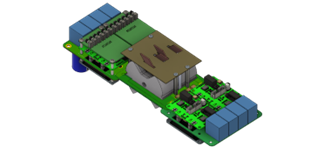
Figure 2: Model of a 420 kW Buck - Boost configuration (Source: AIT)
For the REG-RAD configuration using a voltage band of 800 VDC for both battery and DC bus a bi-directional buck and boost configuration without galvanic isolation has been investigated. Remark: A Dual Active Bridge (DAB) with galvanic isolation has been assessed during Loop 1 with the REG-CON primary battery packs. To achieve a relatively small inductor size and weight it is proposed to integrate smaller cells where legs are interleaved in pairs of two via coupled inductors.
Finally, the EPU safety and fault analysis for selected IMOTHEP architectures have been addressed. The analysis utilized the safety evaluation methodology deployed by the University of Strathclyde team, which builds on the earlier systems level FTA work. Results and discussions of the EPU safety and wider electrical system design are provided at different level (propulsion effects, failure, costs, detection…).
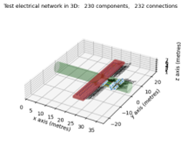
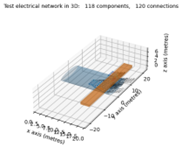
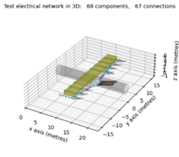
Figure 3: SMR Con, SMR Rad, Reg Rad spatial visualization
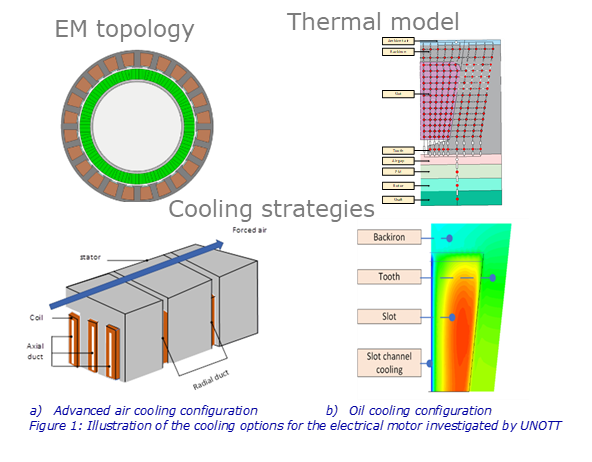
Figure 8: Electrical machine, example of cooling strategy analysis
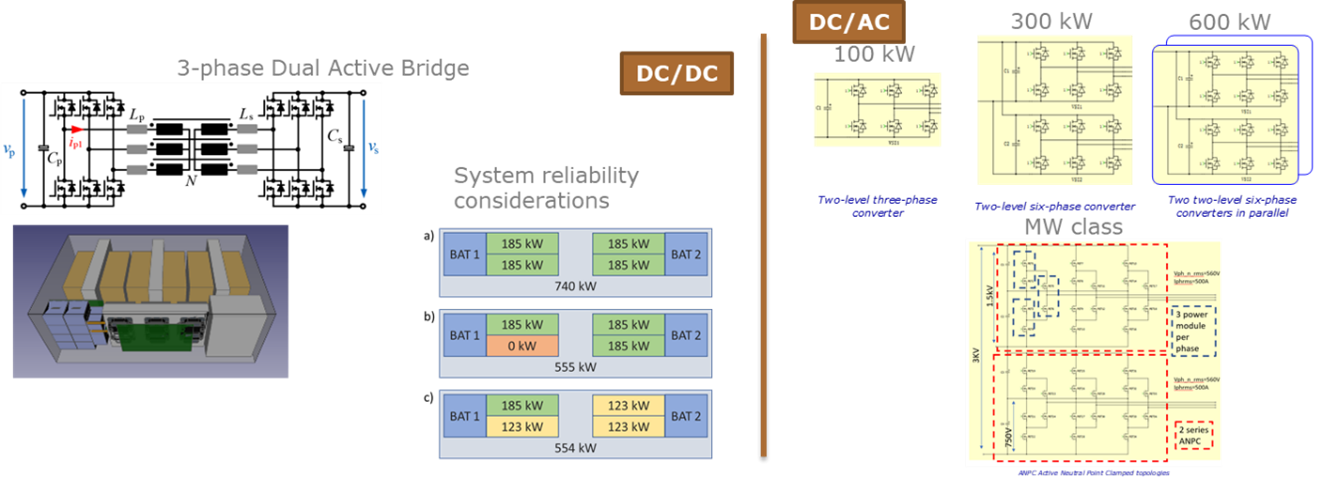
Figure 9: Power electronics and converter, example of investigated topologies
To substantiate the results of the conceptual loop based on the use of macro figures for the electric components, the design phase performed over the past months allowed a first deep dive into the assessment of their performances addressing. The investigations were performed with modellings from the level of the physical phenomena up to the dimensioning of the equipment.
Preliminary assessment of the performances of the electric components (all four aircraft concepts)
To initiate the first design of the electric components in Loop 1, the activities first focused on refining the requirements based on the most up-to-date features of all four aircraft concepts.
Based on this, preliminary design work was carried out to determine the most important characteristic values such as specific power, power density, efficiency and volume of the Electric Components and Electric Propulsion Unit for each aircraft concept.
A conservative approach was used for this first analysis, based on well-known and mature technologies to push them to their limits (or just over) with new assumptions. Sensitivity analyses were performed regarding cooling options, voltage level impact and EPU architecture to assess the impacts on the key design drivers. Based on these results, a first identification of technology gaps was performed and will be updated in Loop 2.
The preliminary design of the different electric components demonstrated that:
- Air-cooling does not meet the requirements in terms of specific power and, therefore, a trade-off has to be investigated regarding the TMS architecture at system level;
- Initial performance targets for the EPU components of the REG-CON, REG-RAD and SMR-CON versions can be achieved with the conservative approach;
- The limits of component feasibility are reached for the existing technologies so that more aggressive technologies shall be investigated to assess their potential benefit at system level. High-voltage concerns had preliminarily been taken into account by the sizing rules, but not in the integration rules and protection concerns;
- The superconducting and cryogenic technologies could be enablers for SMR-RAD at the level of the electrical components, which has to be confirmed by a system and A/C analysis.
The next steps will be to investigate more aggressive technologies for the design of the components and to integrate their performances in the last aircraft design loop. Complementary studies will also be performed taking into account the overall thermal management constraint, integration constraints and the safety results in preparation for the next design loop.
.png)
Electrical machine (pre-design)
.png)
DC/DC converter (pre-design)
The previous activities focused on the preliminary design of the electrical components of the Electric Propulsion Unit and the electrical architecture of the four aircraft concepts investigated under IMOTHEP. After a phase of gathering and refining the requirements that emerged from the conceptual design loop, the performance assessment of the electrical components was carried out, considering some sensitivity analyses.
Preliminary performance assessment of electric components
Based on the latest results from the conceptual design loop, refinement and consistency of the requirements have been addressed for all four aircraft concepts and submitted to the aircraft concept leaders for validation. In some workshops, the need to conduct sensitivity analyses for the scope of the electrical components was also pointed out to substantiate the assumptions and investigations at aircraft level.
The global performance assessment of the electrical components was carried out for both the Regional and SMR aircraft concepts in their radical and conventional versions.
The main components examined are the electric machine, the power electronics and the harnesses. In addition, an overall estimation of the performances at EPU level is evaluated.
For each concept, the key parameters assessed are the specific power, the efficiency and the envelope. A first set of sensitivity analyses was performed on the mechanical power level for the two Regional concepts, a second set on the voltage level for the two SMR concepts, and a comparison between two cooling options (air or liquid) for both Regional and SMR.
Several sizing studies illustrated the differences in optimizing either specific power or efficiency. Finally, at the EPU level, two architectures are considered and assessed to answer the question of whether a gearbox should be installed between the electrical machine and the propeller or fan.
Due to the amount of mechanical power involved in the SMR radical concept for the electric fans, superconductivity technology has also been investigated.At this stage, the perimeter focused only on the power electronics and the electric machine. The preliminary design foresees a fully superconducting electric motor and power electronics at cryogenic temperature to save space and increase the specific power.
Outlook
The next steps will be to
- support the aircraft concepts for the integration of the preliminary results for the different propulsion systems and
- perform complementary studies, considering the overall thermal management constraint, integration constraints and the safety results in preparation for the next design loop.
Based on the four different aircraft configurations proposed in IMOTHEP, establishing the specification baselines for the electrical components of the powertrains started by collecting and synthetizing outputs from the Conceptual Design Loop (“Loop 0”). Currently, these components are being evaluated before entering Design Loop 1.
Conceptual Design Loop: Preliminary performance assessment of electrical components
The work to establish the specifications for the electrical components started in mid-2020. The first step consisted in gathering and refining the top-level requirements coming from the conceptual design loop studies of the regional and SMR aircraft configurations in both versions, conventional and radical. Based on the data relating to the four different aircraft configurations and bolstered by a workshop with DLR, a set of specifications for each aircraft configuration has been established to support the technological assessment. The next step is the evaluation of the key parameters of each powertrain component, with the Austrian Institute of Technology being responsible for the power electronics, the electrical motor studies being coordinated by the University of Nottingham and the wiring and interconnection by SAFRAN. All data will be gathered to assess key parameters and performance of the electrical propulsion unit that meets the needs of each aircraft configuration. This task is driven by SAFRAN with the support of Leonardo, the University of Strathclyde, ONERA and Politecnico di Bari. Current activities are focusing on the “conservative” short-medium range configuration (“DRAGON”, conceived by ONERA) and its technical challenges, such as air-cooling for high power density machines and electronics, high-voltage harness etc. On the other hand, disruptive technological solutions for hybrid-electric propulsion, such as superconductivity, are studied. This activity is led by the University of Lorraine, assisted by the University of Strathclyde and SAFRAN. The efforts are concentrated on the “radical” short-medium range version, which is a blended wing body (BWB) configuration. This configuration needs the most electrical power and its interface seems to be the most appropriate for cryogenic tank integration. So, to start with, the team will focus on identifying the key parameters of the superconductive powertrain and the technological enablers which shall be included in the Loop 2 aircraft configuration for superconductivity integration (cooling system, cryogenics tank etc).
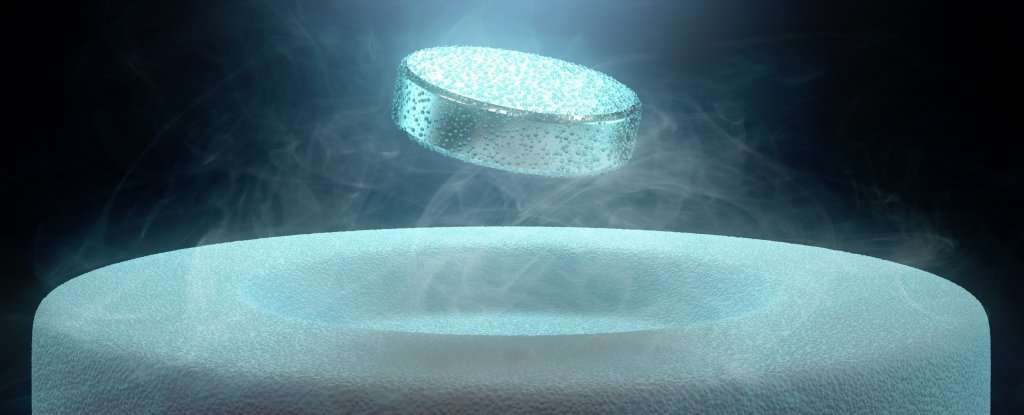
Illustration of Superconductivity phenomena
The first step was achieved with the evaluation of the expected electrical equipmens’t key characteristics and performances. Using this data, the teams working on the topics of Integrated Vehicle Design and Electric Architecture can perform an initial system-level evaluation loop that refines the requirements for the next step.

Roadmap Towards HEP

Objectives
To elaborate the intended roadmap for HEP development, the results of the previous research work will be analysed, and additional specific studies will be performed to cover all aspects of the roadmap. Key challenges to address include:
- synthesising key enabling technologies and technology gaps;
- identifying demonstration needs and proposing corresponding relevant demonstrations;
- analysing the needs for tools and infrastructures;
- identifying the needs for evolutions in regulations.
This cornerstone of the project involves industrial partners, research establishments as well as EUROCONTROL and EASA.
Progress
The last iteration of the project is now undergoing. A refined analysis of the various components of the propulsion chain, with also the investigation of more aggressive technology assumptions, has been achieved. Outcomes are being integrated in the last design loop of configurations. Therefore, the project is awaiting its final conclusions. However, results to date already provide indications and allow drawing the general lines of a development roadmap for HEP.
Results
IMOTHEP is currently completing its last design loop on the two radical configurations that were selected for further refined analysis. The benefit of superconductivity is also under evaluation. Yet, results obtained from the integrated design loop, in which actual performances from component design were used, provides already relatively clear indications for elaborating a roadmap for hybrid electric propulsion.
The results from configuration studies clearly orientate short-term application of hybridization towards regional aircraft. For this segment, parallel hybrid could offer a 10 to 15% fuel burn reduction on short ranges, typically 200 nm, provided that performances at the higher end of current projections could be reached for batteries. The hybrid plug-in configuration (full electric over 200 nm with a range extender for higher ranges) is a more disruptive configuration but offer promising perspectives for emission and fuel burn reductions. For this class of aircraft, electric power distribution seems to be feasible with voltage below 1 kV, although cabling remains an issue for integration reasons, while electric motors in the MW class can be used. Required technologies could reach TRL 6 by 2030. For the plug-in however, high power generator in the 3 MW class is required, which represents a higher technological step. On the contrary, for the SMR, no configuration was identified to date that clearly benefit from hybridization, while the need to move to multi-kV DC electric distribution represents a huge technological step, as well as the development of multi-MW motors and generators. This naturally push the development of a hybrid SMR to a later time horizon, provided that interesting configurations could be identified, maybe also with revisiting the aircraft TLARs and mission.
Accordingly, HEP development roadmap is to focus first on the technologies for the regional class, for the parallel hybrid and the hybrid plug-in power trains.
Batteries are obviously a key enabler for these regional configurations. Specific energy is key, but the development of battery chemistry is most likely to come from other sectors. However, aviation shall connect with battery developers in order to ensure its specific needs are taken into account, in terms of balance between power and energy and operating conditions (altitude, temperature, repetitive fast charging, lifetime, etc.) t. Aviation shall also pursue work on battery integration targeting high cell-to-pack ratio together with safety. Certification will also be key.
For electric motors, the technology level investigated within IMOTHEP (conservative assumptions on technologies that could reach TRL 6 by 2030) already provide a good level of performances. These technologies now need to be matured and demonstrated. For electric generators, more aggressive technologies need to be explored and developed as the plug-in configuration would benefit from improved performances. Taking into account the cooling challenge for both motors and generators, effort should be pursued to maximize efficiency of electric machines and to increase the temperature at which they can operate.
For 800 V DC electric distribution, components for power electronic are expected to appear in the coming years. For the regional application, efforts shall mostly be dedicated to components integration and packaging to ensure safe operation for flight conditions (altitude and temperature).
Regarding electrical wiring and interconnection systems (EWIS), all components (cables, contactors, protection & breakers) need to be developed and certified for 800 V. A concern is cable size that raises integration issues (taking into account also bending radius within aircraft structure). Confirmation of cabling feasibility with 800 DC voltage is being further investigated in the on-going last design loop. Research is also needed on arc fault detection for which no clear solution is yet identified.
Thermal management is a key issue for hybridization. Beyond targeting the highest efficiency and operation temperature for electric components, the design of the thermal management system is closely linked with the configuration design and may have significant impact on mass and aerodynamic drag.
Outlook
Very soon now, the final results of the last design loop will be available and will allow consolidating the conclusions of IMOTHEP. They will be included to finalize the development roadmap of HEP that will constitute the final deliverable of the project.
The progress achieved in all activities performed within IMOTHEP since our last newsletter has allowed the elaboration of a first general synthesis and preliminary assessment of hybrid-electric propulsion (HEP). Although a general roadmap for the maturation of the technology is not yet available, the main technological challenges and research streams that need to be pursued for the development of HEP are emerging.
The key objective of IMOTHEP is to identify the key enablers for HEP from the performance analysis of the four aircraft configurations and from sensitivity analyses showing the technology gaps between the performance achieved by the components designed within the project and the performance level required to meet the emission reduction targets.
An initial comprehensive analysis was conducted based on the results of the detailed design loop ("Loop 1") completed in 2022 together with a synthesis of the performance trends of the four supporting aircraft configurations. It was consolidated with sensitivity analyses of the configurations, observations from a literature review, and iterations with all IMOTHEP partners. Although the results should not be considered final, as a last refined design loop is planned, several trends are noteworthy.
Regarding the potential benefit of hybrid propulsion for SMR aircraft, current results do not allow any conclusions to be drawn about an actual potential benefit of hybridisation for this aircraft category, which would at the same time represent a major technological step for the development of electric systems. This all the more true as the potential benefits need to be significant enough at an early stage of the investigation to justify the investment in technology and ensure that, at the end of a development phase, an actual fuel burn reduction is obtained compared to a conventional incremental approach. This naturally shifts the SMR target to longer-term horizons in the roadmap, as the potential result of incremental technological improvements achieved in less power-demanding machines.
For regional aircraft, the fully electric aircraft with a thermal range extender seems to offer promising perspectives. The concept will be further refined by the end of IMOTHEP to confirm its viability and potential. Apart from this particular architecture, turbo-electric propulsion is not seen as a solution, while the conclusions for parallel hybrid are lukewarm. Based on our analyses, it seems that at least significant battery power would be required to achieve a potential benefit mainly for short-range missions, which would not exceed 10%. However, it should be noted that there is industrial interest in this type of solution (cf. Clean Aviation). In any case, both solutions, parallel hybrid and electric with range extender, are heavily dependent on battery performance, which is a critical building block of the technology roadmap. In this area, aviation will not lead in the development of high-energy chemicals, but it will need to develop the necessary research streams to ensure that the products developed products meet its specific requirements in terms of operating conditions, safety and certification.
In the parallel hybrid architecture, the performances of electric systems have less influence on the feasibility of the regional hybrid aircraft. The electric aircraft with thermal range extender is directly dependent on the efficiency of the electric power train, but much less on the specific performance of electric machines and power electronics. The performances achieved by the electric motors designed within IMOTHEP under rather conservative assumptions provide a satisfactory initial basis. These performances are already beyond the current state of the art and close to the technology projections for 2035. They need to be confirmed through a maturation plan, including the development of a demonstrator. In this configuration, the generator presents a greater challenge. Its efficiency directly affects the range extender mode of the aircraft, but the preliminary design performed within IMOTHEP already reaches 0.975. The main challenge is the required power of 3 MW, which is far above the current state of the art represented by the generators implemented in the Boeing B787 (250 kW each). A gradual increase in the power of generator prototypes may be necessary for the system to mature.
A later SMR development will require a further increase in power for almost all components, which is associated with thermal issues, although, depending on the selected configuration, distributed propulsion is an efficient way to limit power at the EPU level. This could be seen as an incremental development beyond the regional aircraft. Nevertheless, a major additional challenge will be to deal with the associated voltage for power distribution, for which no synergy with the regional aircraft can be found. In addition, the flight altitude is higher, which poses even greater difficulties. As mentioned earlier, the transition to hybrid SMR also requires further configuration studies to first identify a promising architecture.
Outlook
A last refined design loop is now underway within IMOTHEP, focusing mainly on the radical configurations of the project. Aggressive technological assumptions are being used for the design of the powertrain components, providing better insight into the sensitivity of aircraft performance to the technological level of the powertrain and thus the key enablers.
At the same time, work will continue on certification aspects and the need for demonstrations, tolling and infrastructure for maturing HEP. This will lead to the final roadmap, which will also include the outcomes of the exchange planned in 2023 with all European projects working on HEP.
Beyond carrying out a detailed assessment of the potential of hybrid electric propulsion for reducing aircraft emissions, the ultimate goal of IMOTHEP is to build a comprehensive roadmap toward the maturation of the technology.
Building such a roadmap requires considering multiple aspects, all playing a key role in developing the final product. First, these includes identifying the technology gaps and the research orientations to bridge these gaps on the most sensitive components of the aircraft and hybrid system. These include also making sure that the right design tools and facilities are available to carry out the design. Finally, these encompass anticipating the certification of the future system by making sure the right requirements and compliance means are in place. All these aspects are included in the roadmapping process of IMOTHEP.
Beginning of 2022, based on the progress achieved in the definition of the aircraft configuration and various subsystems, the project initiated two important activities with a view to elaborating the roadmap. The first one is the analysis of the adequacy of current certification rules included in EASA CS-25FAR25 with hybrid electric technologies. IMOTHEP partners will examine which requirements and means of compliance could not be applicable for HEP, and will propose solutions for adaptation. EASA will be involved through the review of the analysis and proposals. A second activity is the inventory of the existing facilities for the development of HEP, which will support in a second step the identification of the need for dedicated facility development in Europe.
In parallel, based on the results of components definition studies, a preliminary gap analysis is being performed between the performance actually achieved by the design done by IMOTHEP partners and the technology assumptions from the literature, which were used for aircraft configuration studies.
The final and most important deliverable of IMOTHEP will be a sector-wide roadmap to 2035 for the maturation of hybrid-electric propulsion (HEP) in aviation. Work is in full swing, and conclusions will be drawn later, but based on initial findings, the project will soon present a preliminary roadmap to serve as a basis for the numerous programmes currently being prepared in Europe.
Building on a first gap analysis and aircraft concepts
The IMOTHEP work started with a review of the state of the art of technologies for HEP and their projection to 2035 to determine the key performance assumptions for the initial design of the supporting aircraft configuration. This review allowed to perform a gap analysis, providing information on technologies under consideration and the research needs to achieve the appropriate level of performance. This is the cornerstone for elaborating the roadmap. The results from the first design loop of aircraft configuration, together with additional studies such as CENTRELINE* or NOVAIR also provided useful initial insights on the system categories to be developed as well as on the development schedule.
*(recently completed – watch here our interview with Anaïs Haberman, BHL)
Reaching out to stakeholders
To complement this internal analysis, IMOTHEP organised its first stakeholder workshop in November 2020 to gather additional views and results from other ongoing projects and studies. These have fed into the gap analysis and the preliminary roadmap which shall soon be released. Please stay tuned!

A first stakeholder workshop will be organized on 11 November to reach out to the global community beyond project partners and gather all inputs for the elaboration of the European sector-wide roadmap. The project will release a preliminary roadmap in early 2021 to pave the way to the new Horizon Europe framework programme with meaningful data. In particular, preliminary assessments of possible viable configurations and specific technological paths for reaching the challenging objectives will feed the Clean Aviation Partnership and related SRIA.
This represents a unique opportunity to discuss, together with other EU projects related to HEP, possible synergies and gaps, both at aircraft configuration and technological level, to ensure a full coverage of knowledge and address the challenge of developing HEP, by sharing and implementing together consistent and realistic roadmaps.
In order to support a full visibility and information sharing, a specific questionnaire was built and recently shared, helping the attendants in getting into the core of the project and contributing ideas to the target.